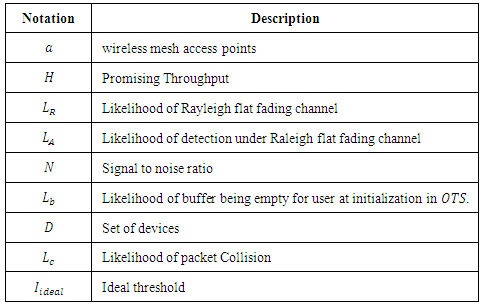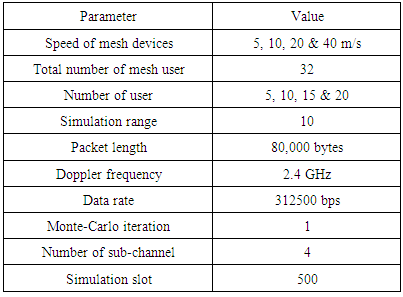| [1] | Chaya Devi R., and T. G. Basavaraju “A Cross-Layer based Mobility Aware Transmission Optimization Technique for Wireless Mesh Network”. in International Journal of Computer Science and Telecommunications Volume 7, Issue 3, March 2016. |
| [2] | “Draft Standard for Information Technology — Telecommunications and Information Exchange between Systems — LAN/MAN Specific Requirements — Part 11: Wireless Medium Access Control (MAC) and Physical Layer (PHY) specifications: Amendment 10: Mesh Networking,” IEEE unapproved draft, IEEE P802.11s/D4.0, Dec. 2009. |
| [3] | B. G. Kim, W. J. Jung, J. Y. Lee, and B. C. Kim, “Design and Performance Analysis of RSRR Scheduling Algorithm for Enhancing Performance of IEEE 802.11s MCCA,” Journal of the Institute of Electronics Engineers of Korea, vol. 51, no. 3, pp. 22–33, 2014. |
| [4] | H. Hassanein and A. Zhou, “Routing with load balancing in wireless Ad hoc networks,” Proceedings of the 4th ACM international workshop on Modeling, analysis and simulation of wireless and mobile systems - MSWIM ’01, pp. 89–96, 2001. |
| [5] | X. Wang, “Key technology and solution to improve throughput in wireless mesh networks,” International Conference on Information, Networking and Automation (ICINA), pp. V1–549–V1–553, Oct. 2010. |
| [6] | Yu Cheng; Hongkun Li; Peng-Jun Wan; Xinbing Wang, “Wireless Mesh Network Capacity Achievable Over the CSMA/CA MAC,” in Vehicular Technology, IEEE Transactions on, vol. 61, no. 7, pp.3151-3165, 2012. |
| [7] | D. Bharadia, E. McMilin, and S. Katti, “Full duplex radios,” Proce. ACM SIGCOMM, pp. 375–386, 2013. |
| [8] | B. J. Oh and C. W. Chen, “An Opportunistic Multi Rate MAC for Reliable H.264/AVC Video Streaming over Wireless Mesh Networks,” In IEEE ISCAS, pp. 1241-1244, Taipei, Taiwan, May 2009. |
| [9] | X. Wang, P. Huang, J. Xie and M. Li, "OFDMA-Based Channel-Width Adaptation in Wireless Mesh Networks," in IEEE Transactions on Vehicular Technology, vol. 63, no. 8, pp. 4039-4052, Oct. 2014. |
| [10] | Ouni, A.; Rivano, H.; Valois, F.; Rosenberg, C., “Energy and Throughput Optimization of Wireless Mesh Networks With Continuous Power Control,” in Wireless Communications, IEEE Transactions on, vol.14, no.2, pp.1131-1142, 2015. |
| [11] | E. Khorov, A. Lyakhov, and A. Safonov, “Flexibility of routing framework architecture in IEEE 802.11s mesh networks,” in Proc. of the 2011 Eight IEEE MASS, 2011, pp. 777–782. |
| [12] | L. Yang and S.-H. Chung, “HWMP+: An improved traffic load sheme for wireless mesh networks,” in Proc. of the 2012 IEEE 14th HPCC, 2012, pp. 722–727. |
| [13] | J. So and N. Vaidya, “Multi-channel MAC for ad hoc networks: Handling multi-channel hidden terminals using a single transceiver,” in Proc. 5th ACM Int. Symp. MobiHoc, 2004, pp. 222–233. |
| [14] | E. Aryafar, O. Gurewitz, and E. Knightly, “Distance-1 constrained channel assignment in single radio wireless mesh networks,” in Proc. IEEE Conf. INFOCOM, 2008, pp. 762–770. |
| [15] | R. Maheshwari, H. Gupta, and S. Das, “Multichannel MAC protocols for wireless networks,” in Proc. IEEE SECON, 2006, vol. 2, pp. 393–401. |
| [16] | A. Subramanian, H. Gupta, S. Das, and J. Cao, “Minimum interference channel assignment in multiradio wireless mesh networks,” IEEE Trans. Mobile Comput., vol. 7, no. 12, pp. 1459–1473, Dec. 2008. |
| [17] | A. Das, H. Alazemi, R. Vijayakumar, and S. Roy, “Optimization models for fixed channel assignment in wireless mesh networks with multiple radios,” in Proc. IEEE SECON, 2005, pp. 463–474. |
| [18] | Ouni, A.; Rivano, H.; Valois, F.; Rosenberg, C., “Energy and Throughput Optimization of Wireless Mesh Networks With Continuous Power Control,” in Wireless Communications, IEEE Transactions on, vol.14, no.2, pp.1131-1142, 2015. |
| [19] | Akyildiz IF, Wang X: A survey on wireless mesh networks. IEEE Commun Mag, 43(9):S23-S30, 2005. |
| [20] | Kim S, Wang X, Madihian M: Cross-layer design of wireless multihop backhaul networks with multiantenna beamforming. IEEE Trans Mobile Comput, 6(11):1259-1269, 2007. |
| [21] | Cao M, Wang X, Kim S-J, Madihian M: Multi-hop wireless backhaul networks: a cross-layer design paradigm. IEEE J Sel Areas Commun, 25(4):738-748, 2007. |
| [22] | Yuan J, Li Z, Yu W, Li B: A cross-layer optimization framework for multihop multicast in wireless mesh networks. IEEE J Sel Areas Commun, 24(11):2092-2103, 2006. |
| [23] | Tang J, Xue G, Chandler C, Zhang W: Link scheduling with power control for throughput enhancement in multihop wireless networks. IEEE Trans Vehicular Technol, 55(3): 733-742. 10.1109/TVT.2006.873836, 2006. |
| [24] | Nandiraju N, Nandiraju D, Santhanam L, B He, Wang J, Agrawal DP: Wireless mesh network: current challenges and future directions of web-in-the-sky. IEEE Wireless Commun Mag, 14(4):79-89, 2007. |
| [25] | Ali SH, Lee KD, Leung VCM: Dynamic resource allocation in OFDMA wireless metropolitan area networks [Radio Resource Management and Protocol Engineering for IEEE 802.16]. IEEE Wireless Commun Mag 2007, 14(1):6-13, 2007. |
| [26] | Lee KD, Leung VCM: Fair allocation of subcarrier and power in an OFDMA wireless mesh network. IEEE J Sel Areas Commun 2006, 24(11):2051-2060, 2006. |
| [27] | Yu Cheng; Hongkun Li; Peng-Jun Wan; Xinbing Wang, “Wireless Mesh Network Capacity Achievable Over the CSMA/CA MAC,” in Vehicular Technology, IEEE Transactions on, vol.61, no.7, pp.3151-3165, 2012. |
| [28] | IEEE 802 LAN/MAN Standards Committee, “Wireless LAN Medium Access Control (MAC) and Physical Layer (PHY) Specifications, IEEE Standard 802.11,” 1999. |
| [29] | J. Deng, B. Liang, and P. K. Varshney, “Tuning the carrier sense range of IEEE 802.11 MAC,” in Proceedings of IEEE Global Telecommunications Conference - Wireless Communications, Networks, and Systems (Globecom’04), 2004. |
| [30] | P. Kyasanur, J. Padhye, and P. Bahl, “On the efficacy of separating control and data into different frequency bands,” in Proceedings of 1st IEEE International Conference on Broadband Networks, 2005. |
| [31] | A. Acharya, A. Misra, and S. Bansal, “Design and analysis of a cooperative medium access scheme for high-performance wireless mesh networks,” in Proceedings of 1st IEEE International Conference on Broadband Networks, 2004. |
| [32] | IEEE Standard for Information Technology— Telecommunications and Information Exchange Between Systems—Local and Metropolitan Area Networks—Specific Requirements—Part 11: Wireless LAN Medium Access Control (MAC) and Physical Layer (PHY) Specifications, IEEE Std 802.11-2007, Jun. 26, 1999, (Revision of IEEE Std 802.11-1999). |
| [33] | N. Nandiraju, H. Gossain, D. Cavalcanti, K. R. Chowdhury, and D. P. Agrawal, “Achieving fairness in wireless LANs by enhanced IEEE 802.11 DCF,” in Proc. IEEE Conf. WiMob, Jun. 2006, pp. 132–139. |
| [34] | M. Garetto, T. Salonidis, and E. Knightly, “Modeling per-flow throughput and capturing starvation in CSMA multi-hop wireless networks,” in Proc. IEEE INFOCOM, Barcelona, Spain, Apr. 2006, pp. 1–13. |
| [35] | J.-F. Lee, W. Liao, and M. C. Chen, “An incentive-based fairness mechanism for multi-hop wireless backhaul networks with selfish nodes,” IEEE Trans. Wireless Commun., vol. 7, no. 2, pp. 697–704, Feb. 2008. |
| [36] | IEEE Standard for Local and Metropolitan Area Networks Part 16: Air Interface for Broadband Wireless Access Systems Amendment 1: Multiple Relay Specification, IEEE Std 802.16j-2009 (Amendment to IEEE Std 802.16-2009), Jun. 12, 2009. |
| [37] | “Evolved Universal Terrestrial Radio Access (E-UTRA); Physical channels and modulation (Release 11),” Sophia-Antipolis Cedex, France, 3GPP TS 36.211, Sep. 2012. |
| [38] | IEEE Draft Standard for Information Technology— Telecommunications and Information Exchange Between Systems—Local and Metropolitan Area Networks—Specific Requirements Part 11: Wireless LAN Medium Access Control (MAC) and Physical Layer (PHY) Specifications Amendment 10: Mesh Networking, IEEE Unapproved Draft Std P802.11s/D6.0, Jun. 2010. |
| [39] | A. Bayan and T. Wan, “A scalable QoS scheduling architecture for WiMAX multi-hop relay networks,” in Proc. 2nd ICETC, vol. 5, pp. V5-326–V5-331, 2010. |
| [40] | S. Bai, W. Zhang, Y. Liu, and C. Wang, “Max–min fair scheduling in OFDMA-based multi-hop WiMAX mesh networks,” in Proc. IEEE ICC, pp. 1–5, 2011. |
| [41] | Y. Mai and K. Chen, “Design of zone-based bandwidth management scheme in IEEE 802.16 multi-hop relay networks,” EURASIP J. Wireless Commun. Netw., no. 1, pp. 1–28, 2011. |
| [42] | S. Kim, X. Wang, and M. Madihian, “Optimal resource allocation in multi-hop OFDMA wireless networks with cooperative relay,” IEEE Trans. Wireless Commun., vol. 7, no. 5, pp. 1833–1838, May 2008. |
| [43] | L. Bao and J. J. Garcia-Luna-Aceves, “A new approach to channel access scheduling for ad hoc networks,” in MobiCom ’01: Proceedings of the 7th annual international conference on Mobile computing and networking, (New York, NY, USA), pp. 210–221, ACM Press, 2001. |
| [44] | Chin-Ya Huang; Ramanathan, P., “Network Layer Support for Gigabit TCP Flows in Wireless Mesh Networks,” in Mobile Computing, IEEE Transactions on , vol.14, no.10, pp.2073-2085, 2015. |
| [45] | Anusha, M.; Vemuru, S.; Gunasekhar, T., "TDMA-based MAC protocols for scheduling channel allocation in multi-channel wireless mesh networks using cognitive radio," in Circuit, Power and Computing Technologies (ICCPCT), International Conference on , vol., no., pp.1-5, 2015. |
| [46] | Djukic, P.; Valaee, S., "Distributed Link Scheduling for TDMA Mesh Networks," in Communications, 2007. ICC '07. IEEE International Conference on, vol., no., pp.3823-3828, 24-28 2007. |
| [47] | S. Zhao, Z. Wu, A. Acharya, and D. Raychaudhuri, “PARMA: A PHY/MAC aware routing metric for ad-hoc wireless networks with multi-rate radios,” in Proceedings of IEEE International Symposium on a World of Wireless, Mobile and Multimedia Networks (WoWMoM 2005), 2005. |



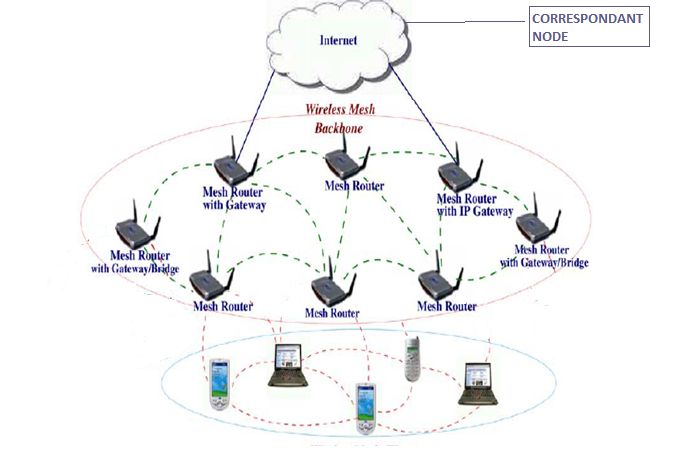
 that associates with wireless mesh access points
that associates with wireless mesh access points  and
and  . Here the author consider a multi radio TDMA based channel and also consider infinite buffer size for obtaining packet drop due to failed or wrong transmission. To optimize the data transmission in wireless mesh network for packet collision avoidance here the authors consider an OTS (optimization transmission stage) as in [1] and the threshold selection algorithm for efficient decision making strategy for mobility management is presented in below subsection.
. Here the author consider a multi radio TDMA based channel and also consider infinite buffer size for obtaining packet drop due to failed or wrong transmission. To optimize the data transmission in wireless mesh network for packet collision avoidance here the authors consider an OTS (optimization transmission stage) as in [1] and the threshold selection algorithm for efficient decision making strategy for mobility management is presented in below subsection.
 is the likelihood of Rayleigh flat fading channel as in [1].
is the likelihood of Rayleigh flat fading channel as in [1].
 is likelihood of buffer being empty for user at initialization of OTS,
is likelihood of buffer being empty for user at initialization of OTS,  is the likelihood of detection under Raleigh flat fading channel as in [1],
is the likelihood of detection under Raleigh flat fading channel as in [1],  ,
,  ,
,  .The equation (2) can be simplified by considering peak N signal to noise ratio (SNR) by considering
.The equation (2) can be simplified by considering peak N signal to noise ratio (SNR) by considering  and
and  .
.




 sources are lost in detection, out of that at least
sources are lost in detection, out of that at least  packets that are collided can be recovered correctly in the OTS. The mean probable packet recoverable is as follows
packets that are collided can be recovered correctly in the OTS. The mean probable packet recoverable is as follows

 the author expect that
the author expect that  and
and  , therefore
, therefore  .To obtain ideal threshold detection under this scenario the author considers that let
.To obtain ideal threshold detection under this scenario the author considers that let  Based on above Eqs. (8), (9) and also Eq. (21) from [1] the author obtain
Based on above Eqs. (8), (9) and also Eq. (21) from [1] the author obtain
 is approximated is as follows
is approximated is as follows

 . i.e. let
. i.e. let  . Therefore based on Eq. (12) we obtain
. Therefore based on Eq. (12) we obtain
 is approximated is as follows
is approximated is as follows

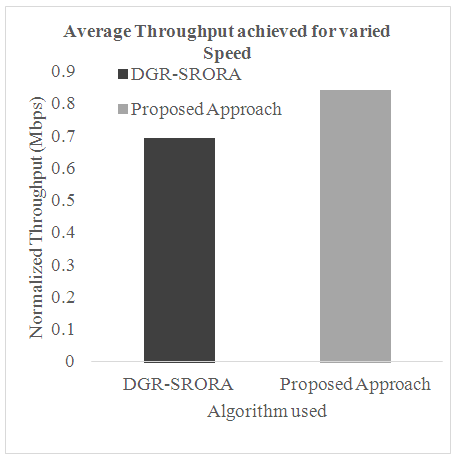
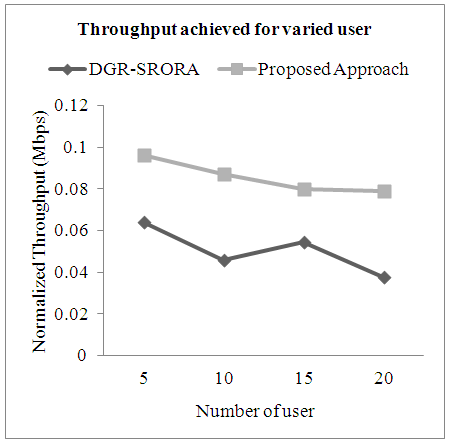

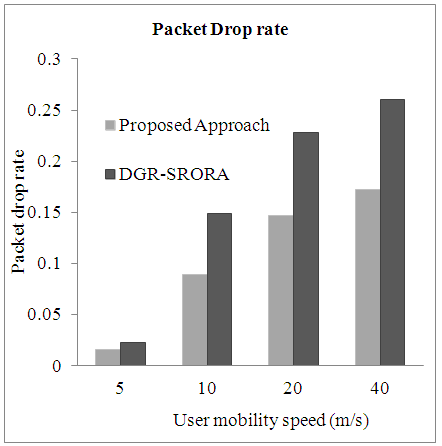
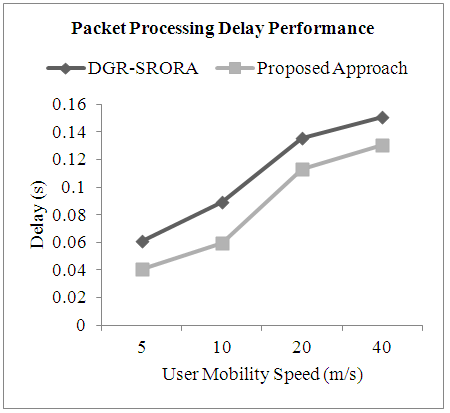
 Abstract
Abstract Reference
Reference Full-Text PDF
Full-Text PDF Full-text HTML
Full-text HTML